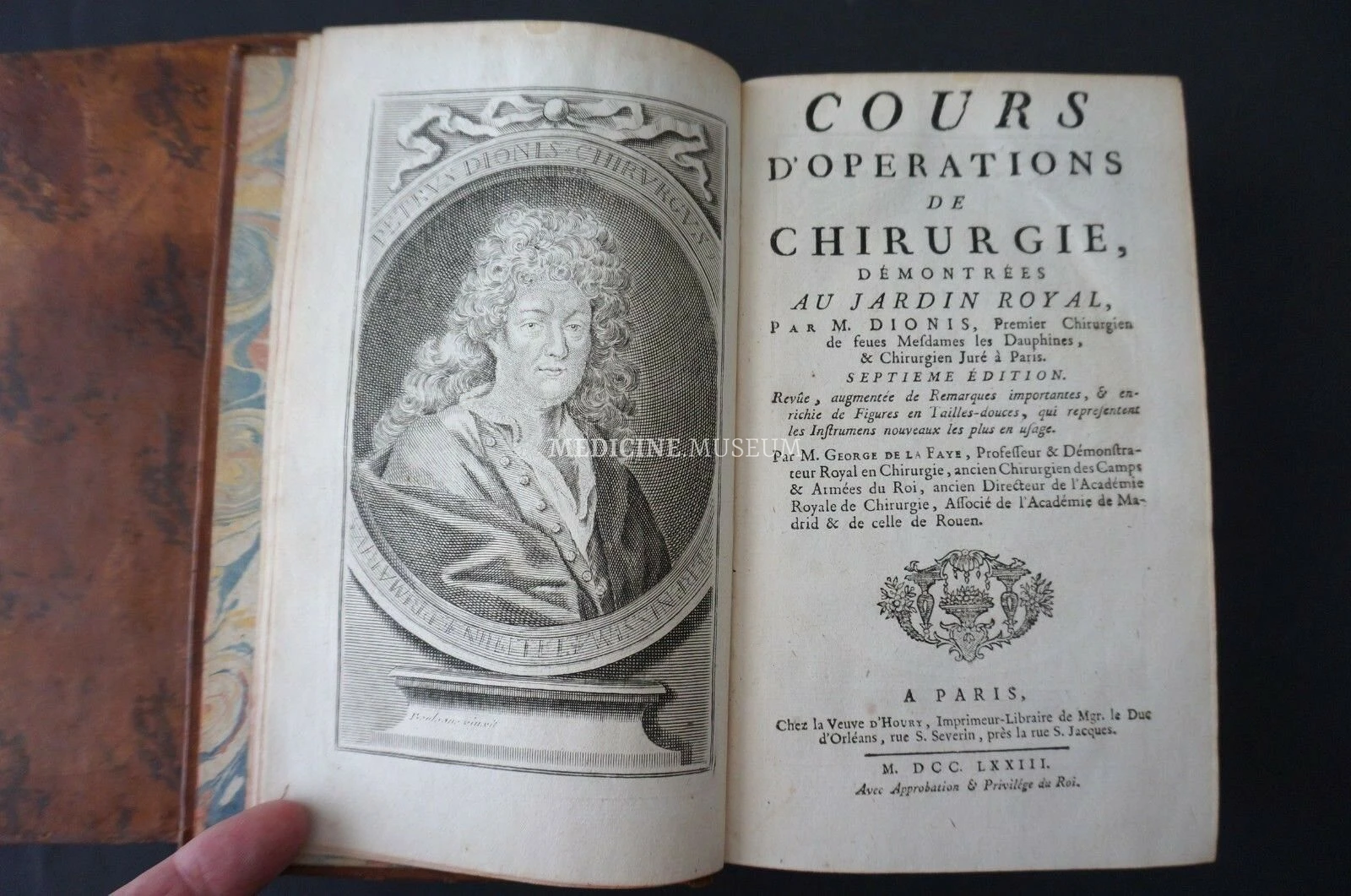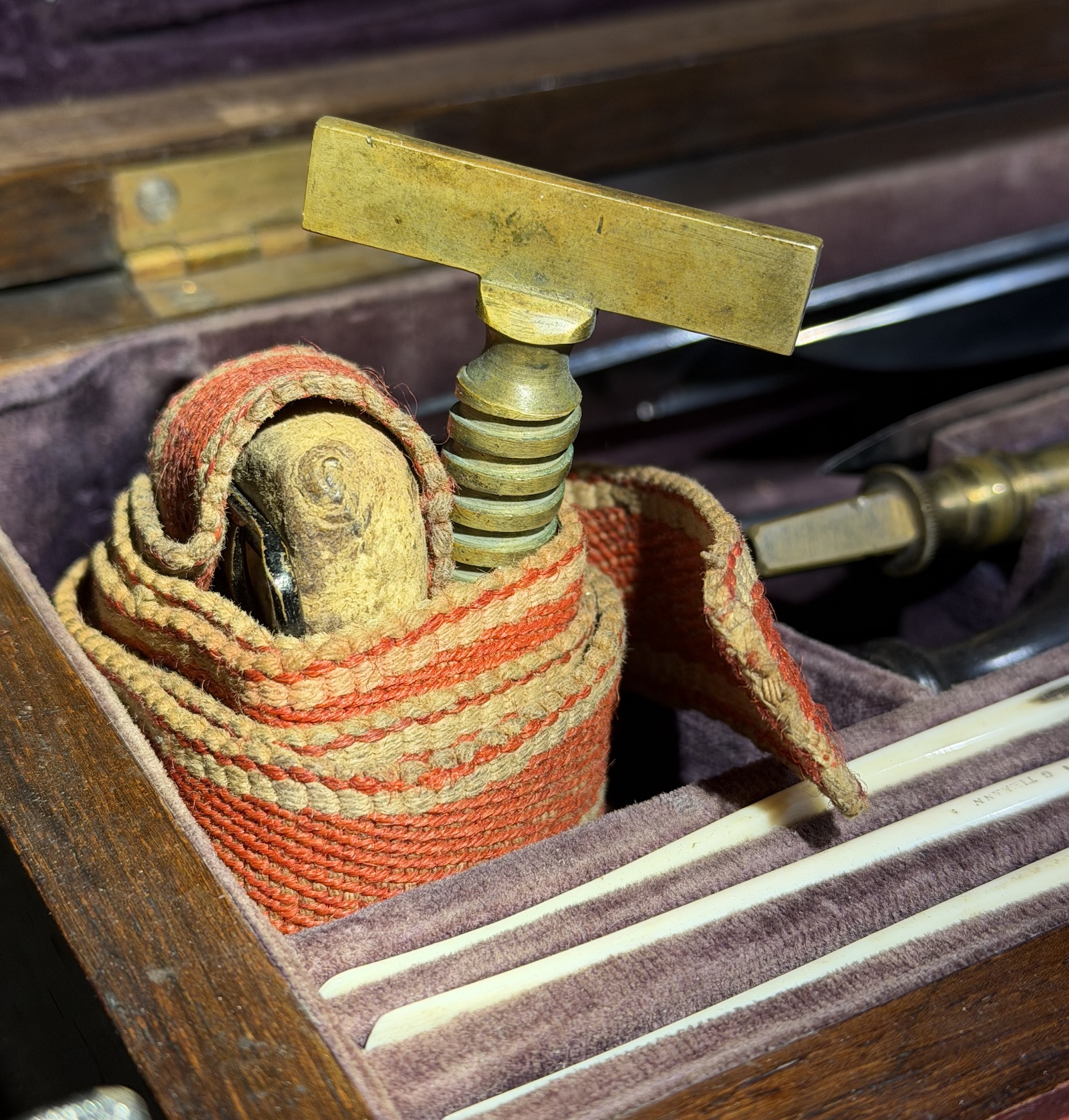Search results2 results
LIBRARY

France, 1773
La Faye, Georg de
Cours d'opérations de chirurgie démontrées au Jardin Royal par M Dionis, Premier chirurgien de feues Mesdames les Dauphines et chirurgien Juré à Paris, en dix démonstrations (Course of surgical operations demonstrated at the Royal Garden by M Dionis, First surgeon to the late Mesdames les Dauphines and Sworn surgeon in Paris, in ten demonstrations). Published by the widow of Houry, printer and bookseller to Mgr le Duc d'Orléans, rue St Séverin, near rue St Jacques. Paris, 1773. Two volumes. A classic work on surgery, reprinted several times throughout the 18th century. Dionis' lessons cover the whole of operative medicine in ten demonstrations, from the lower abdomen to the head and eyes. Additional remarks by La Faye present discoveries made since the first edition, published in 1707.
Articles

The tourniquet is considered by many to be one of the most significant inventions in the history of surgery, having saved millions of soldiers and trauma victims. The earliest documented methods of blood control emerged in ancient India, as evidenced by Sushruta's ligatures, and referenced by Roman medici for vessel tying and cauterisation, in addition to external limb binding. Medieval and Renaissance barber-surgeons utilised tight bands, and in the 18th century, Jean-Louis Petit developed the screw tourniquet. The evolution of emergency care has been characterised by significant developments, with innovations ranging from Esmarch's elastic bandage to modern C-A-T devices.